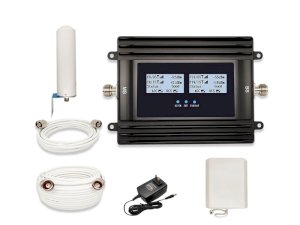
In the UK, rural areas often struggle with inadequate mobile connectivity, a significant barrier to modern communication and economic development. Vodafone, a leading telecom provider, is addressing this issue head-on with strategic initiatives, including a proposed merger with Three UK, the rollout of 5G technology, and the deployment of mobile signal boosters. Here's how these efforts aim to transform rural connectivity.
The Rural Connectivity Challenge
According to Ofcom, approximately 9% of rural UK areas still experience poor mobile coverage, affecting millions who rely on mobile networks for essential services and communication. The lack of reliable coverage, often termed "not spots," impacts:
- Remote work and business activities
- Access to emergency services
- Agricultural and logistic operations
- Educational opportunities
Vodafone's Strategic Moves
The Vodafone-Three Merger
Vodafone's proposed £15 billion merger with Three UK is a significant step towards enhancing rural coverage. The merger is expected to:
- Increase Coverage: Achieve 99% population coverage.
- Boost Network Investment: Allocate £11 billion to infrastructure improvements over the next decade.
- Enhance Efficiency: Leverage shared resources to improve service delivery and reduce costs.
Expanding 5G Coverage
5G technology is central to Vodafone's strategy, offering faster speeds and more reliable connections. Key benefits of 5G for rural areas include:
- Low Latency: Critical for applications like telemedicine and remote education.
- High Capacity: Supports numerous connected devices, enabling smart agriculture and IoT applications.
- Economic Growth: Facilitates new business models and enhances productivity.
Mobile Signal Enhancement
For immediate improvements, Vodafone is also focusing on mobile signal enhancement technologies, including signal boosters:
- Network-Specific Boosters: Devices approved by Vodafone to work seamlessly within their network.
- Multi-Operator Solutions: Boosters that cover multiple networks, ideal for community use.
Impact of Signal Boosters: A Case Study
In a rural village in Wales, Vodafone implemented signal boosters with remarkable results:
| Metric | Before Implementation | After Implementation |
|---|---|---|
| Average Signal Strength | 1 bar | 4 bars |
| Internet Speed | 1 Mbps | 20 Mbps |
| Call Drop Rate | 60% | 10% |
| Customer Satisfaction | 40% | 85% |
Future Outlook
Short-term Goals (2024-2025)
- 5G Rollout: Expand coverage to 75% of rural areas.
- Infrastructure Sharing: Implement shared network sites with Three.
- Enhanced Services: Offer tailored solutions for agriculture and healthcare.
Long-term Vision (2025-2030)
- Complete "Not Spot" Elimination: Achieve ubiquitous coverage.
- Advanced IoT Solutions: Develop integrated IoT services for rural industries.
- Community Engagement: Work with local communities to address specific connectivity needs.
Practical Tips for Rural Residents
- Check Coverage Maps: Regularly review Vodafone's coverage updates.
- Consider Signal Boosters: Use approved boosters to enhance indoor coverage.
- Engage with Local Initiatives: Support community-driven connectivity projects.
Conclusion
Vodafone's approach to solving rural connectivity issues through strategic mergers, 5G technology, and signal enhancement is poised to significantly improve mobile services in rural UK areas. By bridging the digital divide, Vodafone aims to provide rural communities with the tools needed for growth and development in a connected world. As these initiatives progress, rural residents can look forward to more reliable services, improved internet speeds, and better access to digital opportunities. This transformation not only enhances daily life but also unlocks potential for economic and social advancement in rural areas. For more information, stay updated with Ofcom and Vodafone for the latest developments in rural connectivity enhancements.







